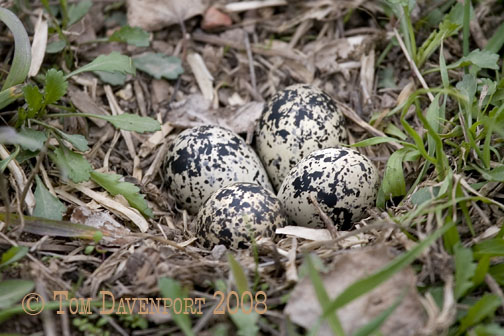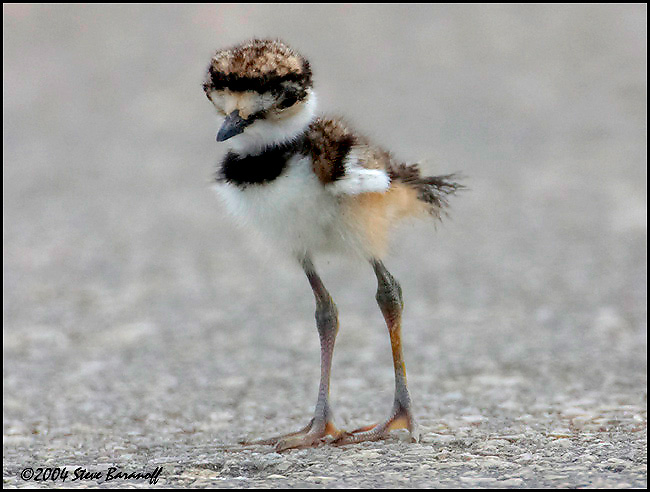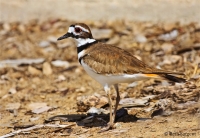 The Killdeer is a long-legged, large-headed bird with a short bill and double breast-band. Its long, pointed wings and tail feathers give the bird an elegant look while its white breast, orange rump and slim, angular body make it distinctive during flight. The red orbital (eye) ring appears in adults of both sexes, but is more distinctive in males. The upper parts of the killdeer can vary from rufous to dull brown.
The Killdeer is a long-legged, large-headed bird with a short bill and double breast-band. Its long, pointed wings and tail feathers give the bird an elegant look while its white breast, orange rump and slim, angular body make it distinctive during flight. The red orbital (eye) ring appears in adults of both sexes, but is more distinctive in males. The upper parts of the killdeer can vary from rufous to dull brown.
Males court females by performing a scrape display. The male will lay its chest to the ground and scrape a shallow depression before the female bows her head and takes his place. She will lay 3-5 eggs in a gravelly nest which she guards intently. Killdeer are known to feign a broken wing and emit a distress call to lure potential threats away from nests. To distract larger threats which could potentially stomp on eggs, the killdeer uses a different display. Animals such as cows and horses are scared away when the Killdeer fluffs itself up, flips its tail overhead and charges the animal. Killdeer that are startled when not protecting a nest or eggs will quickly take flight, circle overhead and emit repeatedly the shrill "kill-deer" noise after which the the bird was named.
Fun Facts:
- Although Killdeer enjoy dry and rocky terrain, they show their true shorebird roots with their proficient swimming skills.

- The Killdeer was nicknamed "chattering plover" and "noisy plover" by eighteenth century naturalists after they noted its gregarious nature.
- The juvenile Killdeer only has one dark breast-band, but will quickly gain a second band as it matures.
- The juvenile Killdeer can often be confused with the Semipalmated and Wilson's plovers, but can be differentiated by looking for its pinkish legs and solid black bill. Habitat identification can be helpful too since a Semipalmated and Wilson's will never be found in a dry, grassy area.
- The oldest known Killdeer lived to be nearly 11 years old.





